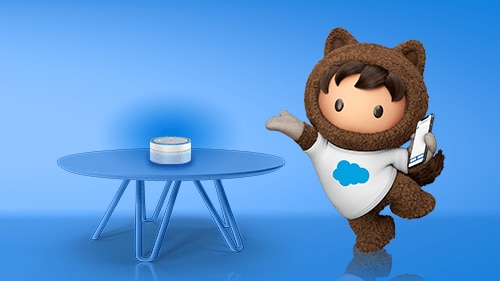This article was written by CloudSense, a Salesforce partner.
Do you remember the last time you rented a movie from a video store? What about when you missed a show? One word: reruns. Now, binging movies or an entire series is a normal weekend activity for many. And, if you miss a prime time show, you can now watch it on-demand.
This is because the rise of productless companies has completely disrupted the communications industry. For many years, communications providers focused on differentiation through products. But, as seen through the success of Amazon and Uber — the latter of which doesn’t own or have a product — experience is the true differentiator.
To stay ahead, communications providers must look to disruptors in retail and lead with experience. What you may not realize is how doable it is.
In my experience helping communications providers around the world, disruptive change can happen without big efforts within your business. These are three proven ways to make transformation happen.
1. Rethink subscriber management
Many customers have multiple logins from the same provider and frequently reset passwords they inevitably forget. Others get bounced around to different departments when they call with a question.
“Friction-free” is shorthand for saying that if your customers use more than one of your products or services, it should be easy for them to manage different accounts or profiles. Customers want a small number of apps or services. They want an easy experience from their providers that they can go back to again and again. Here’s how.
Don’t limit your data sources
Your data is constant, real-time, and geo-located. Every packet of data can be analyzed. With the right engagement platform, you can pull in information from your service and activation layer and turn it into actionable data. This means you can offer a personalized experience based on utilization data.
Strive for unity
Instead of using data in isolation, leverage your wealth of data across product and service lines to create highly targeted, contextual experiences. When a customer walks into a store for a new device, the sales associate should know who they are and how to best serve them.
Personalize better than anyone
In retail, artificial intelligence (AI) powers the customer journey with recommended products, promotions, and content. But retailers operate off a limited amount of data. That’s a build opportunity for communications providers — the richness of data (see the first step) enables recommendations that aren’t possible in any other industry.
Move to self-service
There’s a huge shift toward self-service, eliminating that terrible experience of calling a provider and being redirected. Customers want convenience in their hands with a single click. They want to see all of their products and services, just like when they go on Amazon Prime and see their orders when they’re watching a show.
2. Build commerce experiences around your customer
The reality is it’s becoming harder to differentiate products. Customer experience is the new path to revenue and retention. According to Walker, 86% of people are willing to pay more for a great customer experience.
When you think about commerce in the communications industry, it isn’t one sale. It’s an ongoing relationship, all the way to when customers want to change or swap a service. Forward-looking communications providers are combining what they offer with service bundles that drive customer lifetime value:
- Convenient, personalized offerings like monthly plans let customers change their service without the commitment of an annual contract — while delivering what the customer wants at any given time.
- Bundled offers such as free antivirus software with your Wi-Fi service or a subscription to a premium music service creates more revenue.
Many providers offer voice technology add-ons, too (think Skype or FaceTime). These are the types of products customers want, and if they can flex solutions as part of your product or service, that gives them more reason to stick around for the long run.
3. Start with your customer, then your products
In the past, communications providers launched a new product or service and then figured out the rest. Today, you need to think about every point in the customer journey and then fit the right products or services.
I believe in standing up a new capability for the customer in a very short amount of time. An iterative approach proves results quickly and allows you to increase the number of products in your catalog:
- Pick a set of products to test in your target market.
- Embed sophisticated analytics to track performance and create richer packages.
- Increase or refine the products in your bundle. Repeat.
If you don’t disrupt your own industry, someone else will. Lead with experience and bundle products and services customers love directly on your site. If you missed us at Dreamforce 2019, check out this session covering the ways you build experiences that disrupt the communications industry.




























